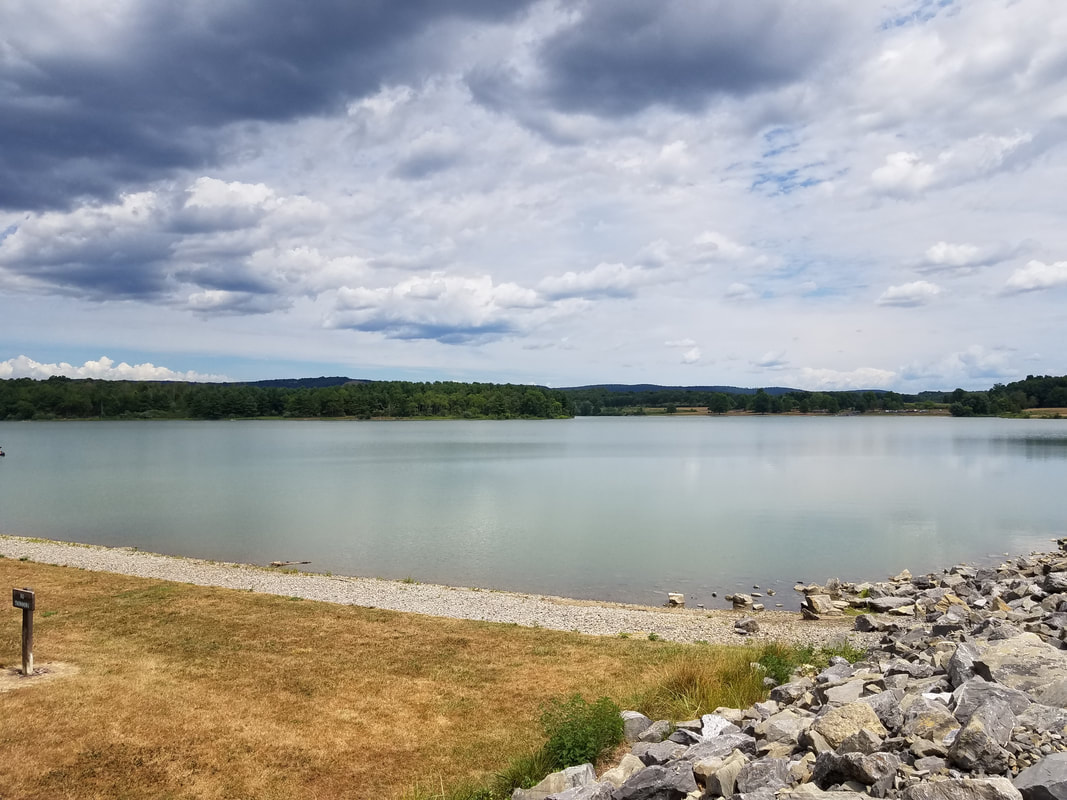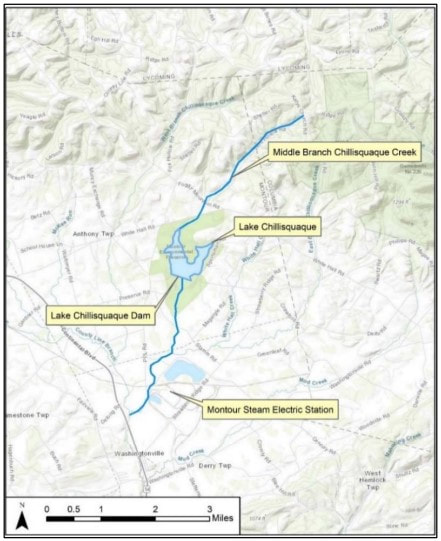|
Estimated natural waterflow from the Chillisquaque Creek system and regional precipitation is sufficient to sustain adequate water levels within Lake Chillisquaque without additional pumping from the Susquehanna River, according to a lake level analysis study by Gannett Fleming, of Harrisburg. The report, part of a March 2020 settlement agreement between the Middle Susquehanna Riverkeeper Association and Talen Energy, looks at the hydraulics and hydrology of Lake Chillisquaque within the Montour Preserve to determine its sustainability after Talen Energy no longer needs the lake as a coolant option for the nearby Montour powerplant.
To conduct the study, “A customized computer model was developed to simulate the operations of Lake Chillisquaque and predict the lake level from 1913 to 2020 under a variety of operating scenarios. Daily inflow to the lake was simulated using correlated historical data of stream gages in the surrounding area,” according to the report.
In the model, “Water entering the lake consists of natural inflow and precipitation. Water lost from the lake includes the specified conservation release, net evaporation losses, and additional discharge to Middle Branch Chillisquaque Creek per the assigned operating rules to maintain the desired lake level. A variety of operational approaches were simulated,” according to the study. In terms of precipitation and evaporation values, “gages at Williamsport River (NCDC Station ID 369733), Danville (NCDC Station ID 362013), Williamsport Regional Airport (NCDC Station ID 14778), Millville 2 SW (NCDC Station ID 365817), and Lewisburg (NCDC Station ID 364976)” were used. Because there is no streamflow gauge on the Middle Branch of the Chillisquaque Creek above where it enters Lake Chillisquaque, “a survey of stream gages within approximately 40 miles of Lake Chillisquaque was performed to identify available historical streamflow data for use in synthesizing a database of daily inflows to the reservoir.” These gages included locations on Chillisquaque Creek in Washingtonville, Little Fishing Creek in Eyers Grove, East Branch of the Chillisquaque Creek near Washingtonville, Fishing Creek near Bloomsburg, Muncy Creek near Sonestown, Wapwallopen Creek near Wapwallopen, Trexler Run near Ringtown, Lycoming Creek near Trout Run, Sand Spring Run near White Deer, Penns Creek at the town of Penns Creek, North Branch of Mehoopany Creek near Lovelton, East Mahantango Creek near Dalmatia, Blockhouse Creek near English Center and Larrys Creek at Cogan House. Ultimately, the study showed “Very conclusively (that) Lake Chillisquaque would be a self-sustaining lake, as long as the Lake Chillisquaque dam remains (at Montour Preserve),” said Bob Stoudt, executive director of the Montour Area Recreation Commission in a recent story by the Milton Standard-Journal newspaper. The dam, 54‐foot‐high, 2,000‐foot‐long zoned earthfill embankment, was completed in 1971 and maintained by PPL before Talen took over in 2015. Talen is required to maintain the dam until the property is transferred to a new owner. The Gannett Fleming study included some recommendations on the frequency of checks needed to maintain an adequate water level in the lake. While managing the dam will require specific skillsets and resources for any potential new owner, Zaktansky is confident that a realistic solution will be achieved. "While there are still many potential hurdles ahead of us, we are committed to investigating all scenarios, both in and outside the box, to follow through with efforts sparked by our settlement with Talen Energy to preserve the long-term viability of the Montour Preserve," Zaktansky said. "We are confident in achieving that goal, but it will require closely working together with all partners as a unified team." In regards to water quality components of the March 2020 settlement agreement, work has been done to identify the location of a new background well for water sampling at the Montour plant, to develop a surface water sampling plan in local creeks and the Middle Susquehanna Riverkeeper Association has used funds received in the agreement to test local residential water wells and has started arranging water treatment systems for homeowners that need assistance. “It is exciting to start seeing positive impacts from this agreement and we are excited to continue to work hard with local partners to protect and improve local resources,” said Zaktansky.
1 Comment
5/25/2023 12:39:56 pm
Thanks for your post.
Reply
Leave a Reply. |
AuthorsRiverkeeper John Zaktansky is an award-winning journalist and avid promoter of the outdoors who loves camping, kayaking, fishing and hunting with the family. Archives
July 2024
Topics |


 RSS Feed
RSS Feed